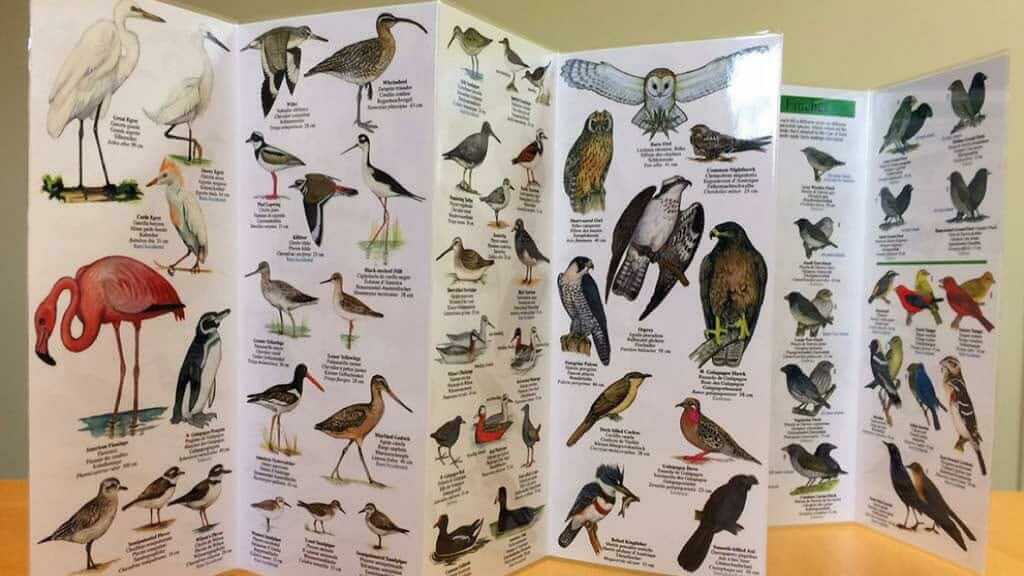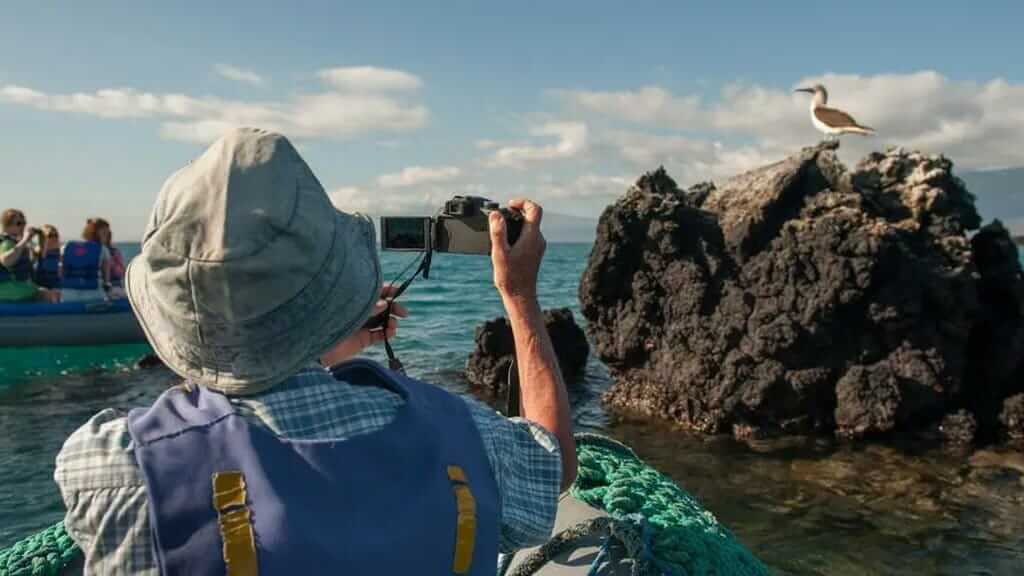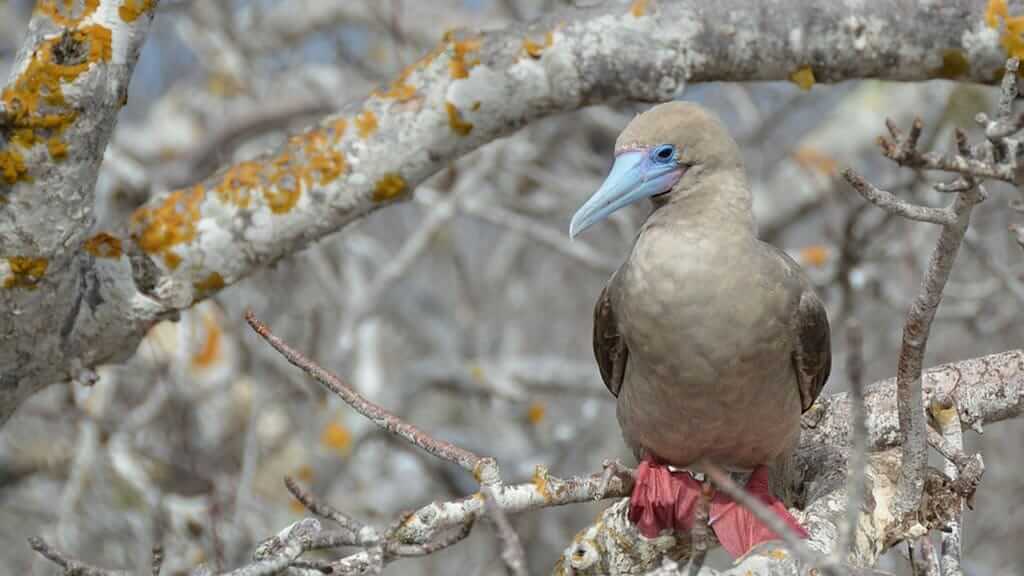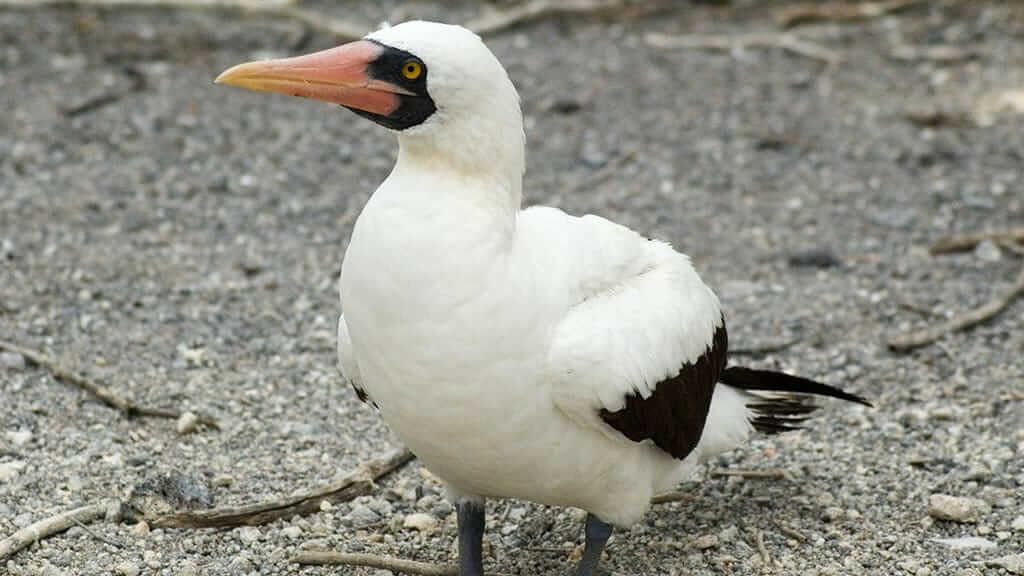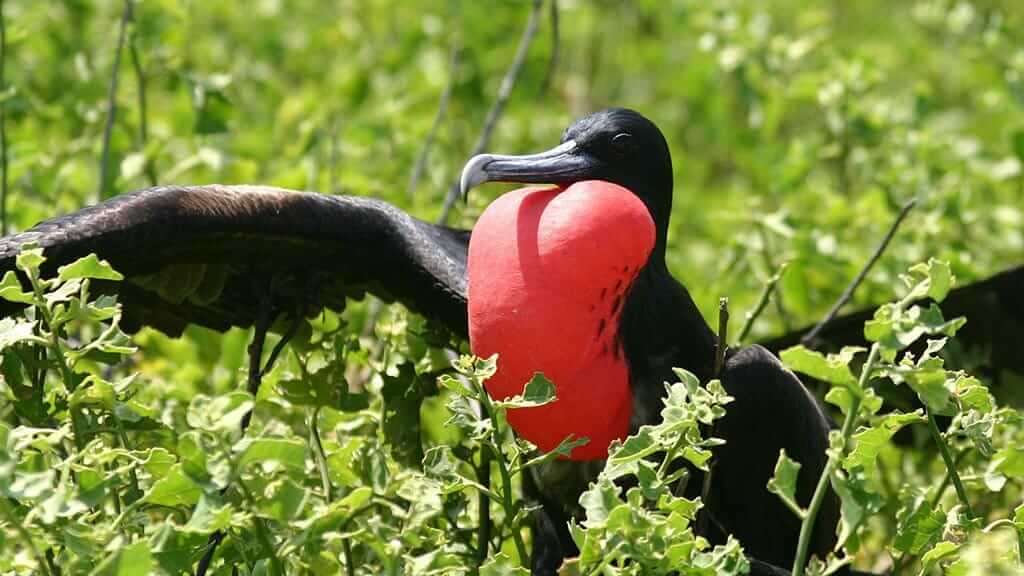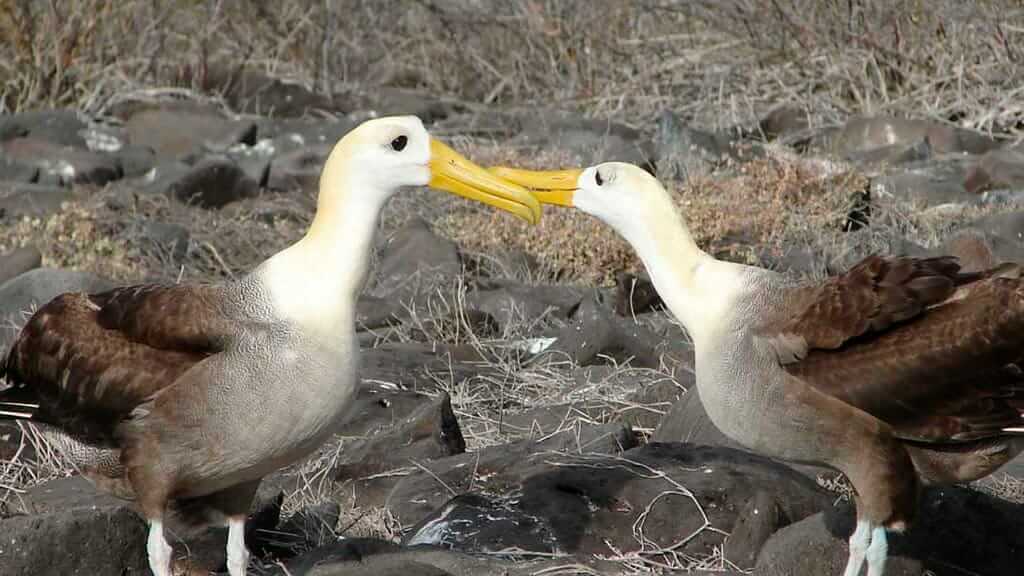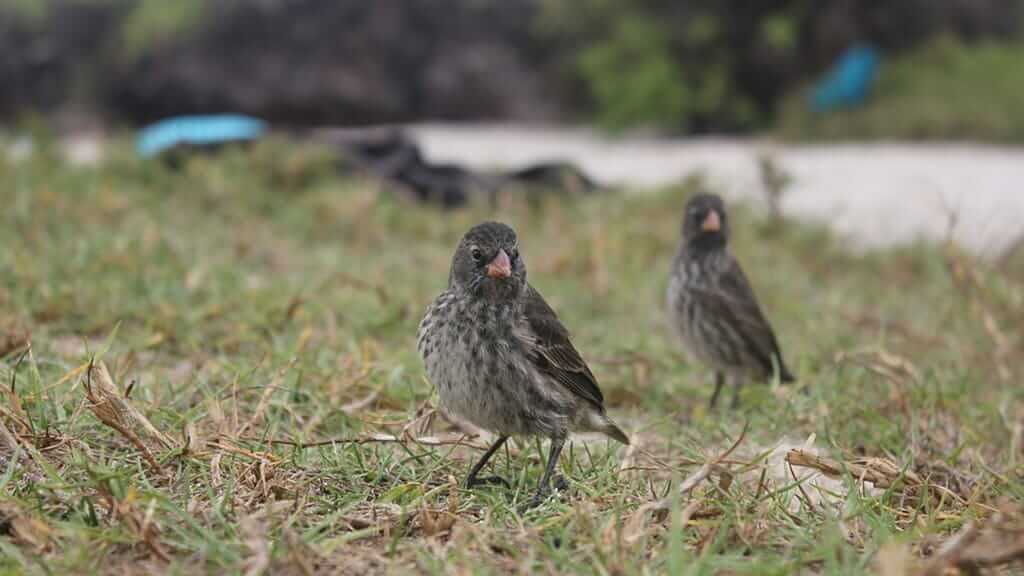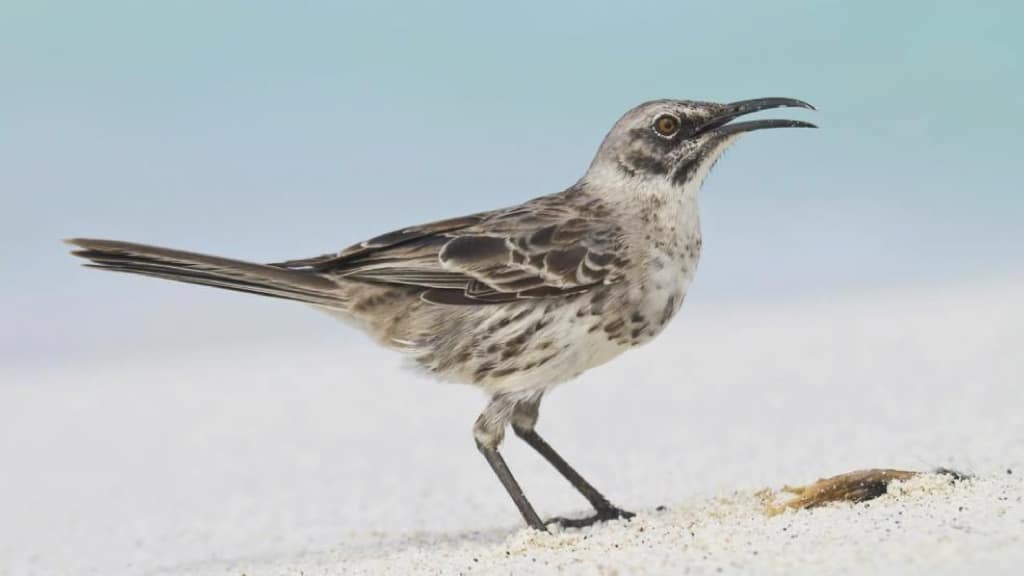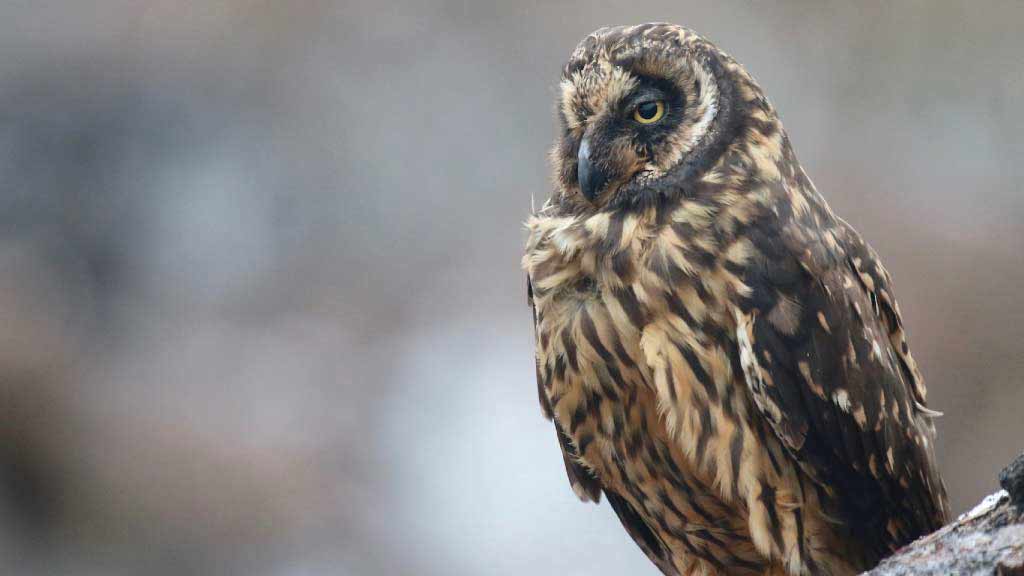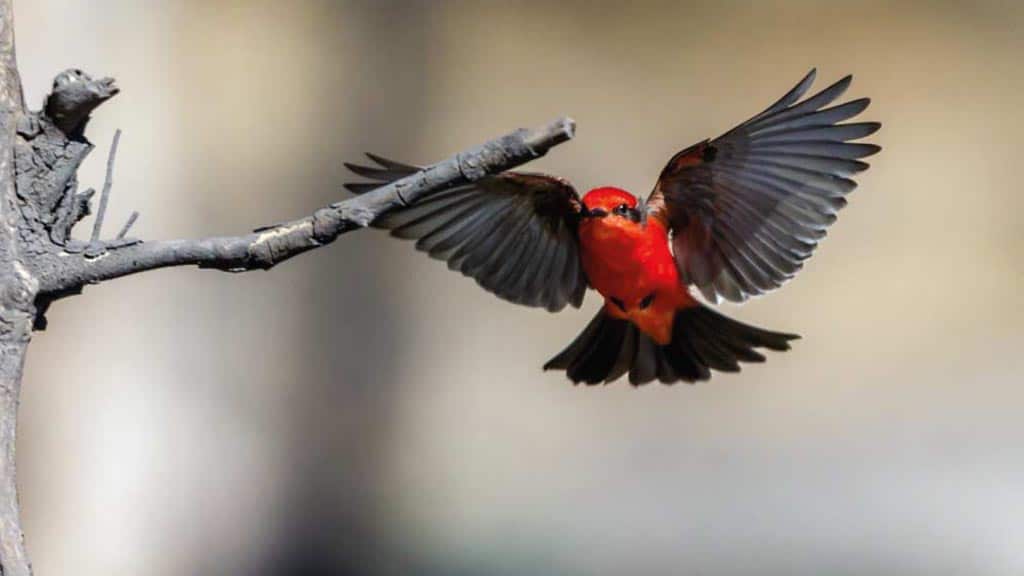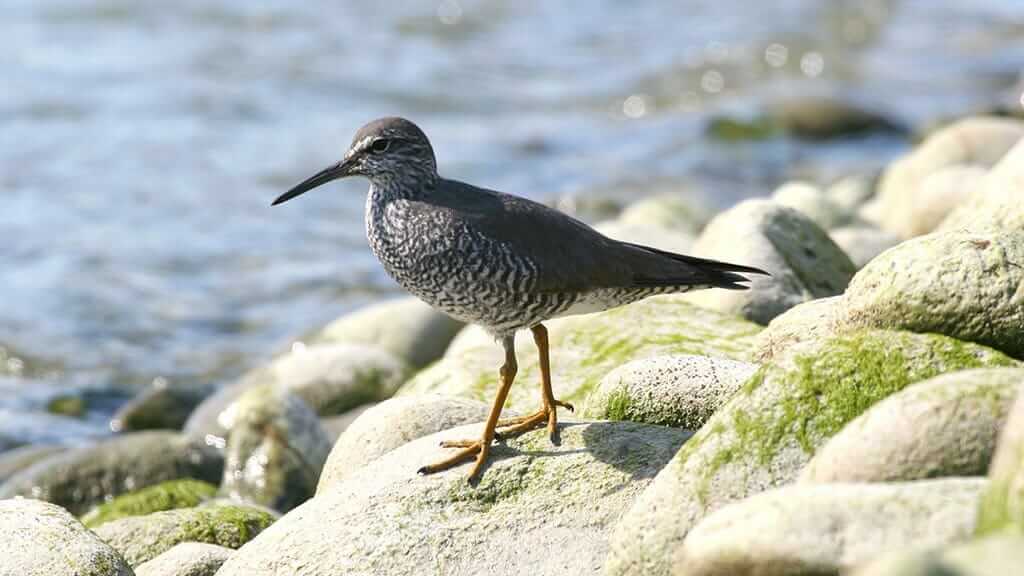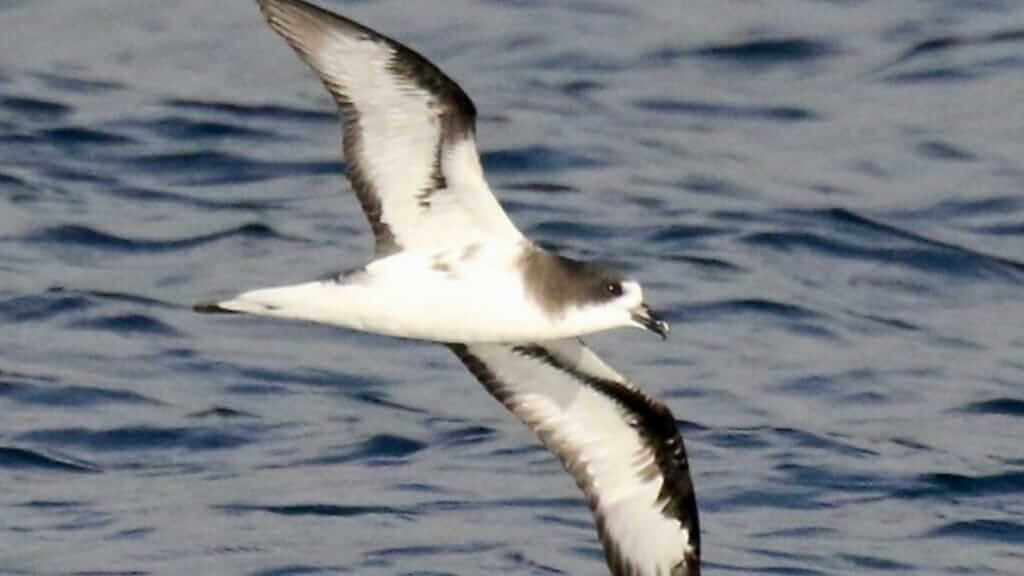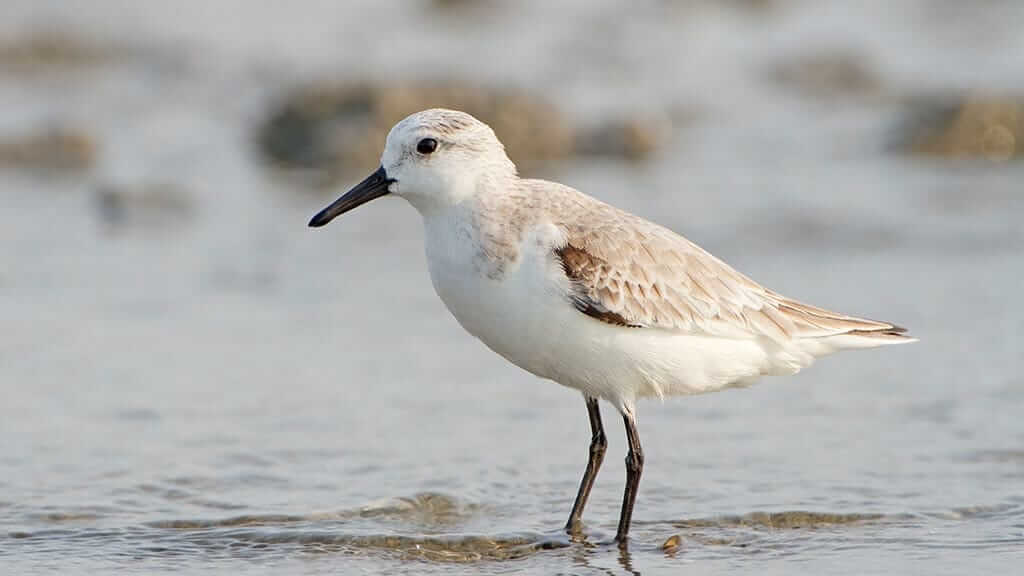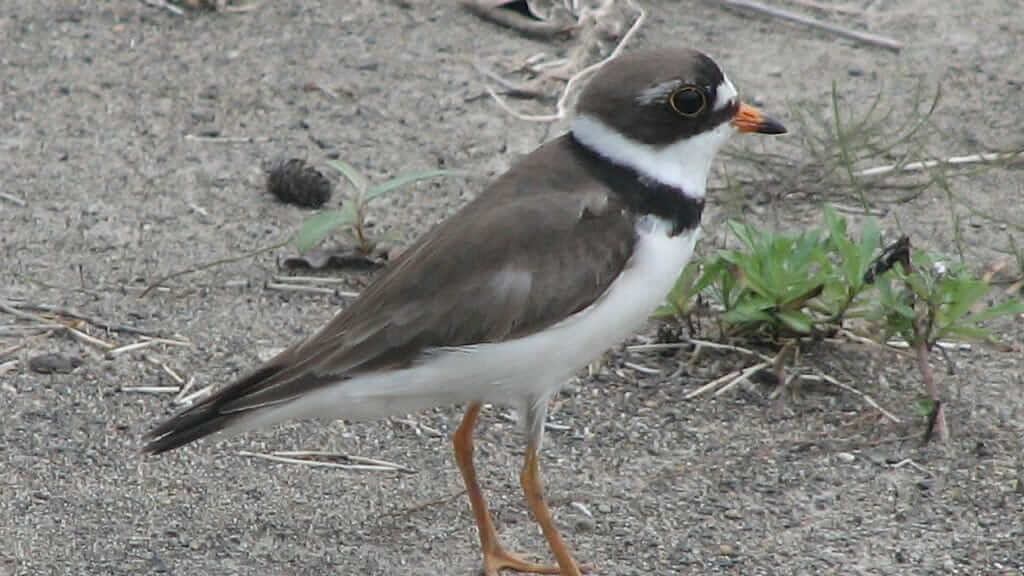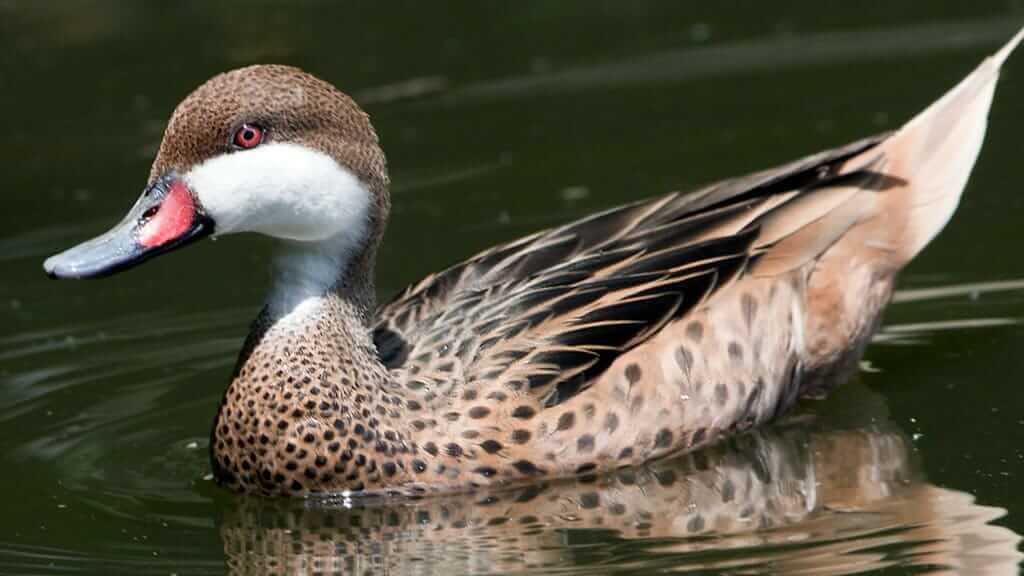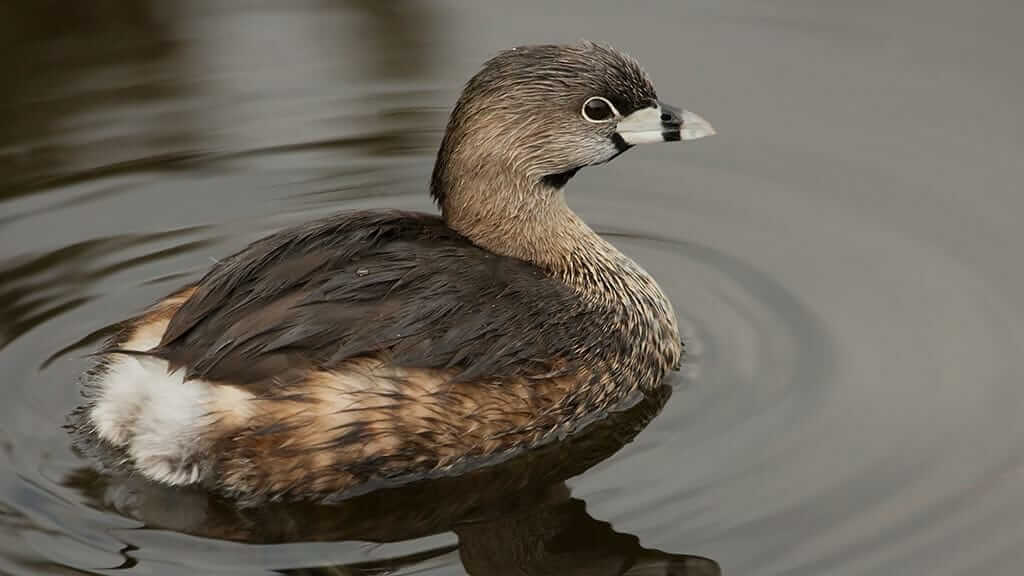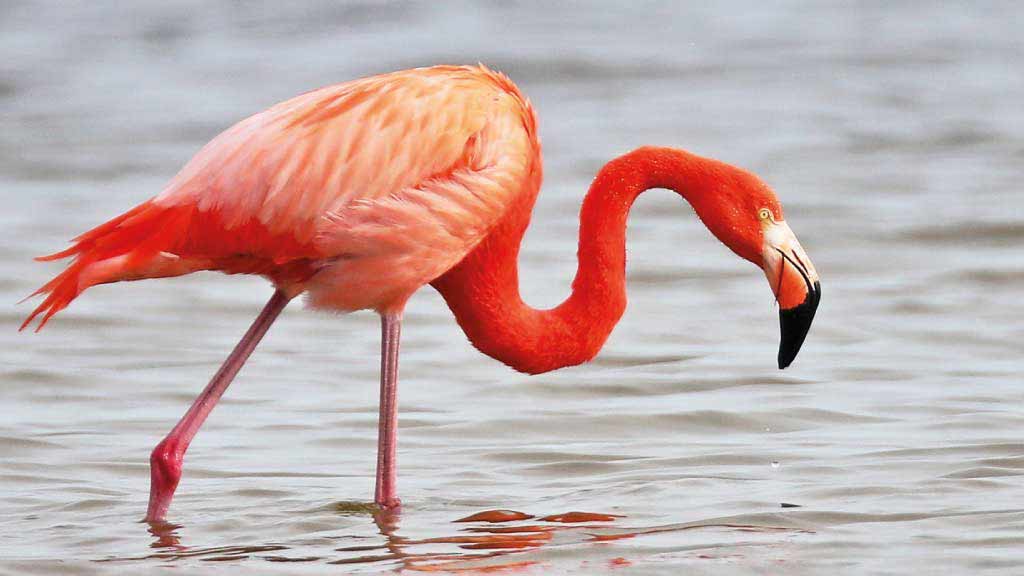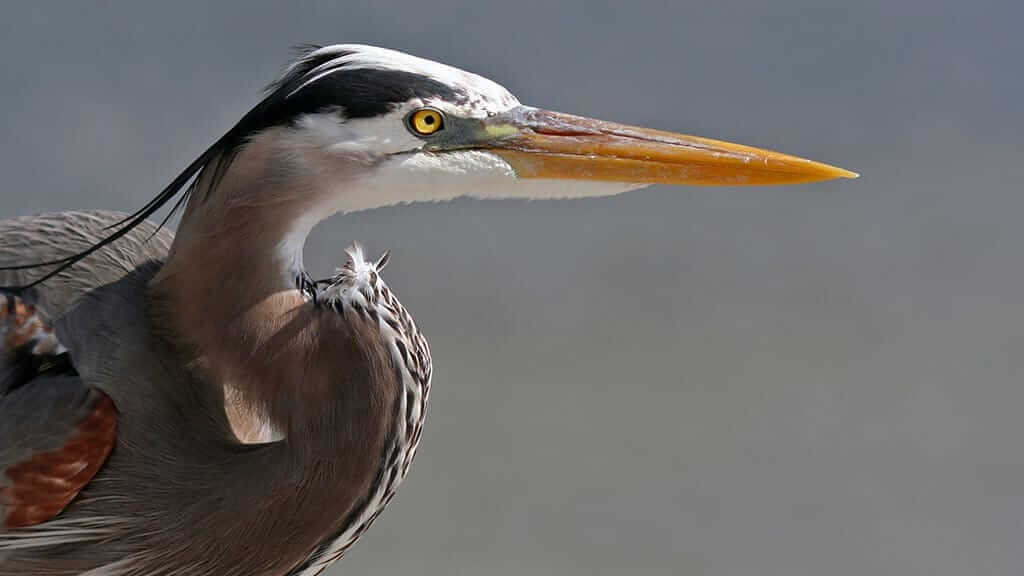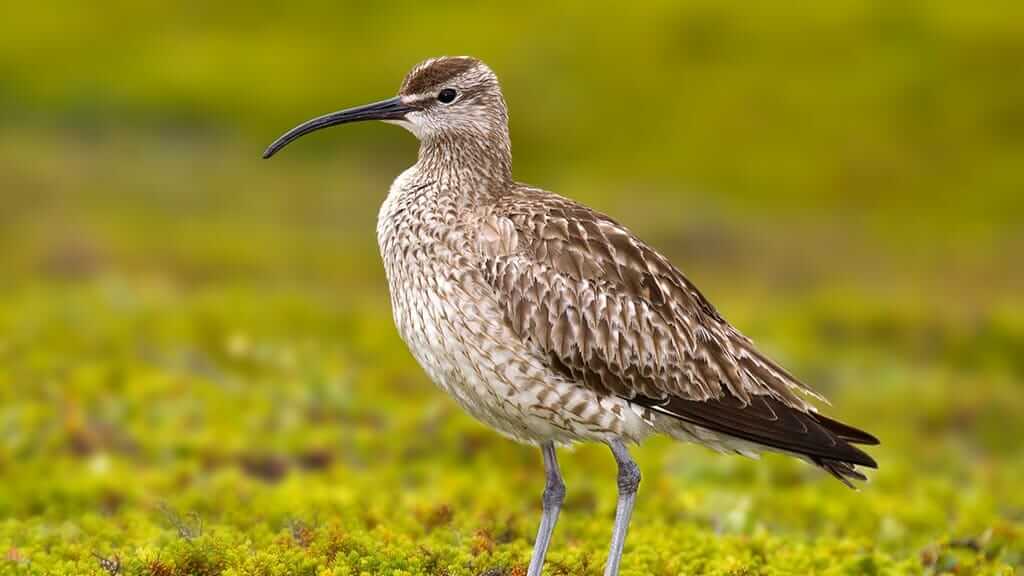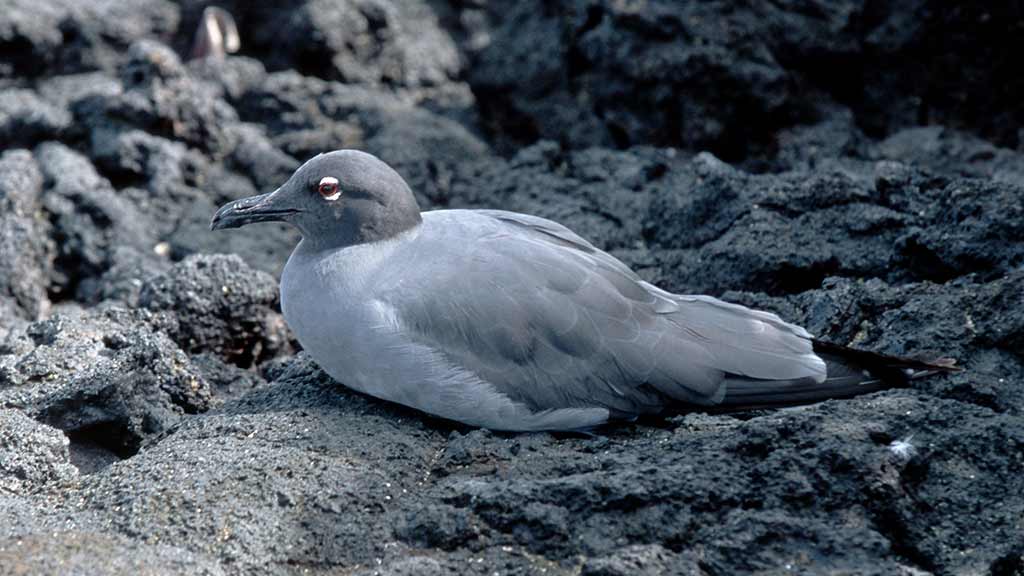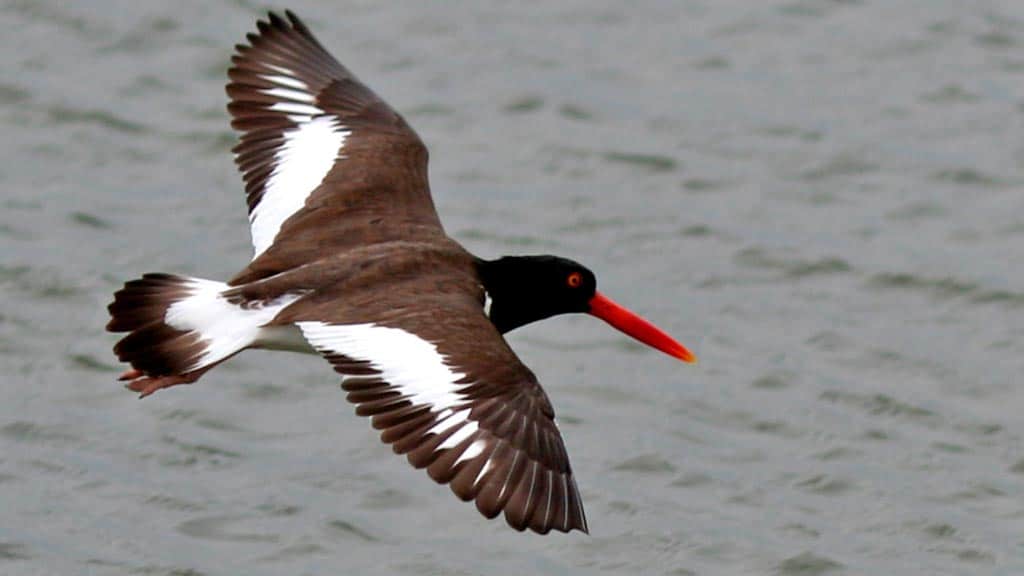GALAPAGOS BIRDS: THE STARS OF THE SHOW
The Galapagos Islands are an unbelievable destination for bird watching, with 174 unique bird species, 26 endemics (native Galapagos birds), and an up-close experience that rivals BBC and NatGeo documentaries.
Even if birds are not usually your thing, it’s hard not to get hooked by the colorful and quirky mix of Galapagos Birds that you’ll cross paths with at the archipelago. Here you’ll find curious Boobies with bright blue or red feet, dancing like clowns to attract their mate. The only penguin species to make it’s home right on the equator. A Cormorant with such tiny wings that it can no longer fly. Colorful Flamingos wading gracefully on stilt-like legs. Eerie Frigates cruising overhead like Pterodactyls, stealing the catch of smaller seabirds. This is no ordinary birding destination.
Keep reading to learn more about the most iconic Galapagos Bird species, both land and sea birds, as well as tips to correctly identify them.
SECURE YOUR GALAPAGOS TRAVEL
Get a FREE personalised quote todayGalapagos Birds List
To get us started, let’s share three wonderful bird watching resources, useful for identifying different species of Galapagos Bird.
Before you travel we recommend downloading the Birds Eye Galapagos Free App to your cellphone. Here you’ll find photos, sounds and text for all Galapagos Bird Species, to help you identify them, as well as learning much more about them. Graphs show when and where recent sightings have been made, and you can add your own bird data to the App to help scientific research at the Islands.
It can also help to have a Galapagos Birding Guide to hand, we particularly like the Galapagos Islands Bird Guide by Rainforest Publications, for a handy, light-weight plastified guide with illustrations. You could use this printable tick-off species list from Ebird.org.
How to See Galapagos Birds?
The good news is that you’re guaranteed to see a great diversity of Galapagos bird sightings on any vacation to the Islands. On either a Galapagos Cruise or Galapagos Land Tour you will undoubtedly come face to beak with more birds than you imagine, often at very close quarters as their curiosity gets the better of them.
Contact us for a FREE GALAPAGOS TOUR QUOTE, with no obligations.
Your naturalist guide will be happy to point them out to you, help with Galapagos bird identification, and explain all about the behaviour of each species. With either a professional camera or cellphone you can expect to return home with some amazing shots.
Galapagos Islands Birds: Principal Species
While by no means a complete list of Galapagos Birds, here are some of the iconic species that you should expect to find at Galapagos. We have seperated them into four categories:
For many of these bird species Happy Gringo have also written more in-depth blog posts, just follow each species link below to find them.
Galapagos Sea Birds
The cool waters of the Galapagos Marine Reserve are extremely rich in oxygen and nutrients, which supports all forms of marine life, providing an abundant diet for a great variety of Galapagos seabirds. Thousands of miles of open ocean, and protected cliffs for nesting, make seabird species feel right at home. There are thought to be as many as 750,000 seabirds at Galapagos, making them a common visitor sight, either fishing at sea or in large breeding colonies on the land or sea cliffs.
Here are some of the iconic Galapagos Seabird species to look out for:
BLUE FOOTED BOOBY
Blue-footed boobies are one the big Galapagos bird crowd-pleasers, and for good reason. Those unmistakable blue feet, clown-like behaviour, and quirky mating dance, make them birds that are fun to spot multiple times during a trip. Even their name, Booby, comes from the word Bobo meaning clown in spanish.
You can find Blue Footed Boobies right across the archipelago, spectacularly diving like bullets from the sky into the ocean, or at their nests on the ground in large colonies, particularly on Española and North Seymour Islands. March is typically a good time to see their mating dance, while chicks hatch around June, and stay in the nest for up to 6 months until strong enough to fly.
RED FOOTED BOOBY
The Red Footed Booby is the smallest of the Booby species found at the Galapagos Islands, and also the most scarce. Easily recognisable for their distinctive red feet, unlike other Boobies they nest in trees or shrubs, and spend most of their time out at sea, where they are expert fishers for squid or flying fish, and can dive as far as 30meters into the sea.
The largest colony of Red Footed Boobies in the world is found on Genovesa Island, where a gentle path takes visitors into the middle of their breeding grounds. There is also a colony at Punta Pitt (San Cristobal), and on a small islet off of Floreana Island.
NAZCA BOOBY
The Nazca Booby is the more reserved member of the booby bird family in the Galapagos Islands, spending most of their time out at sea, and with less colorful feet. As with all Boobies, the Nazca Booby is highly adept at fishing, and can be found across many of the islands. One of the best places to see Nazca Boobies is on Española Island where a large breeding colony is established, or on San Cristobal at Punta Pitt, where they mix with Blue and Red Footed boobies.
FRIGATE BIRD
The Spanish nicknamed these birds, ‘pirate birds,’ as they often chase other bird species such as Boobies, and force them to regurgitate their food by grabbing their tail feathers and shaking them. There are two different species at Galapagos: the Magnificent Frigatebird, and the smaller Great Frigatebird. They fly like prehistoric Pterodactyls, often following Galapagos yachts or fishing boats, and are easily recognised on land by their puffed out red pouches to attract females. Both species are easily spotted right across the archipelago.
GALAPAGOS PENGUIN (endemic species)
Who would imagine that penguins live at the equator? The Galapagos Penguin is suited to cold Antarctic conditions, yet somehow adapted to the warmer climate in the tropics. Always popular with Galapagos visitors, these fascinating birds can be found on Isabela, Fernandina and Bartolome Islands, and if lucky you might be able to snorkel as they dive underwater fishing.
WAVED ALBATROSS (endemic species)
The spectacular Waved Albatross is the largest bird in the Galapagos, with an impressive wingspan of up to 2 and 1/2 meters. They can only be found on Española Island, and from the month of April through to December, when they come home to nest. This handsome bird is popular for it’s complex courtship ritual, where pairs tenderly circle clash bills. From January to March the colony takes to sea for an intense period of feeding.
FLIGHTLESS CORMORANT (endemic species)
The Flightless Cormorant originally arrived to the Galapagos islands by flight, but has remarkably adapted by losing the ability to fly. What they lack in flight they more than make up for in the water, their powerful hindquarters allow them to plunge to deep depths, quickly maneuvering after food. The only spot to find the Flightless Cormorant bird is on Isabela or Fernandina Islands.
RED-BILLED TROPICBIRD
The Red-billed Tropic Bird are graceful flyers, their red beaks and white bodies complemented by their long, sleek tail feathers. They can be seen all around the islands, nesting in rocky cliffs, or flying overhead before they plunge into the ocean after food. This is not an endemic species, and can be found in the Atlantic, Pacific, and Indian oceans.
SWALLOW-TAILED GULL (near endemic species)
The Swallow-tailed Gull is most easily recognised for it’s attractive, bright orange/red ring around each eye, and black beak with white base and grey point. These birds can be found right across the archipelago, especially in the warmer eastern waters, nesting on cliffs or rocks.
GET FREE ADVICE
From a Galapagos destination expert todayGalapagos Land Birds
In total there are are 29 species of land bird at the Galapagos Islands, of which an incredible 75% are endemic species. All land birds at some time in the past arrived from the South American mainland, presumably by a combination of flight, strong winds, floating on foliage, as well as a healthy dose of luck. Today you’ll find many of them in the lush green highlands, or close to fresh water sources.
Here are some of the more common or interesting land bird species to keep an eye out for:
DARWIN’S FINCH (endemic species)
The Darwin’s Galapagos Finch first gained notoriety from the studies of English botanist Charles Darwin, and his subsequent Theory of Evolution. At Galapagos today, you can find 13 different sub-species of Finch, all endemic, and with different beak adaptations on each island. Originally just one finch species arrived to the islands, and adapted over time into the different subspecies depending on their distinctive habitat and food source, for example Cactus Finches have long, sharp beaks to pierce fruit, while Ground Finches have shorter, stubbier beaks to gather seeds from the ground. For more information about each subspecies, check out our detailed Darwin’s Galapagos Finch blog.
GALAPAGOS MOCKINGBIRDS (endemic species)
The Galapagos Mockingbird is another species studied by Darwin. Today, we find four different species of Mockingbird at Galapagos, each endemic to the islands, and all likely descended from a common ancestor from North America. The Galapagos Mockingbird is the most common, found on most islands on the archipelago, while rarer subspecies are only found only on Espanola, Floreana and San Cristobal. The Mockingbird is another iconic species that helped Charles Darwin to notice that birds on different islands developed different physical traits in order to adapt and survive.
GALAPAGOS HAWK (endemic species)
The Galapagos Hawk is one of the only predators at the islands, positioned at the top of the food chain of Galapagos land species. Unfortunately the human introduction of cats and dogs have turned the hunter into the hunted, leaving just 150 breeding pairs alive today. These Galapagos birds of prey can be found on most of the main islands, they are highly skilled hunters capable of preying on small iguana or tortoises, often hunting in packs of 2 or 3.
GALAPAGOS SHORT-EARED OWL (endemic species)
The Short-eared Owl is so named due to their short ear tufts, and has adapted to hunt at day or night to avoid competition from Galapagos Hawks. The best place to find these cute birds at Galapagos is on Genovesa Island, where they feed on Storm Petrels, Lava Lizards, or even Small Boobies or Marine Iguanas, striking swiftly and silently before their prey can react.
GALAPAGOS DOVE (endemic species)
The beautiful Galapagos Dove can be found in arid zones on most islands, and can be recognised by it’s red feet, striking blue eye ring, and speckled golden-brown plumage. They feed mostly on seeds and insects, and are often not shy around humans.
VERMILLION FLYCATCHER (endemic species)
The bright red male Vermillion Flycatcher is easily spotted in the highlands of Santa Cruz, as well as on Isabela, Fernandina and Rabida islands. Closely related to Vermillion Flycatchers from the mainland Americas, they feed on insects, and are most abundant from December to May in the warm & wet season when the highlands become lush with vegetation – this is also their breeding season.
YELLOW WARBLER
Although not a Galapagos endemic bird species, the Yellow Warbler is worthy of mention for it’s melodious song and attractive bright yellow plumage, with reds streaks for males. The Yellow Warbler makes its home on major islands right across the archipelago.
Galapagos Migratory Birds
The Galapagos Archipelago sits within the Pacific Americas Flyway, where rich nutrients make the islands desirable stopping-off point for migratory birds. Most birds that migrate to the Galapagos Islands are native to North America, flying south to escape the harsh northern hemisphere winter (October – March).
These are the 6 most common migratory birds that pop-up on Galapagos shores:
WANDERING TATTLER
The Wandering Tattler is found around the archipelago, arriving from the far reaches of the Arctic Circle, Russia, Alaska, and the California coast. They feed on crustaceans, insects, and worms, wading in the water, and bobbing up and down after their prey. Their coat and wings are grey, and their chest is a checkerboard of grey and white coloring.
GALAPAGOS PETREL (breeding endemic species)
The Galapagos Petrel takes residence at the Galapagos islands in April and May to mate and lay eggs, while spending the rest of the year foraging at sea. Other migratory Petrel bird species that commonly visit the Galapagos Islands are: Wedge-rumped Storm Petrel, Band-rumped Storm Petrel, and Least Storm Petrel.
SANDERLING
The sanderling bird spends the summer months beachside, along the shores of the Galapagos, after arriving from colder Arctic waters. Feeding and nesting within a stone’s throw of the sea, this small brown and white bird forages for mole crabs and invertebrates, before heading further south in August each year.
RED-NECKED PHALAROPE
Showing off a white body with brown feathers on their wings, a tan/red neck and fetching black mohawk, Phalaropes take refuge at the islands from the Arctic regions of Europe and North America. They are found in the open water, feeding on plankton that is drawn out by spinning in the water.
SEMIPALMATED PLOVER
Arriving from Northern Europe in August, and leaving again in the spring of the following year, the Semipalmated Plover has a brown band around its neck, brown wings and back, and a white chest and belly. They are beach lovers and found along the open sands of visitor sites around the archipelago. Blackbellied Plovers may also be spotted.
RUDDY TURNSTONE
Arriving each year after breeding in western Alaska, Ellesmere Island, Greenland, Norway, Denmark, Sweden, Finland, Estonia, and northern Russia, Ruddy Turnstones are sun lovers that flock to the beaches and coasts of the Galapagos islands. Their wings are brown and white, switching colors in a spotted pattern that gives way to a white body and black breast.
Galapagos Water & Shore Birds
Finally we have the water and shore birds who have made the Galapagos Islands their home.
WHITE-CHEEKED PINTAIL DUCK (endemic species)
Endemic Species
The White-cheeked Pintail Duck is one of four duck species found in the Galapagos, and the only endemic member of the group. Sporting a white with crowded black-spotted plumage, the black and red-billed ducks are often seen in pairs in the lagoons and mangrove coves of the islands.
PIED-BILLED GREBE
The Pied-billed Grebe is found in the marshes, mangroves, and lagoons of the islands. Dirty brown plumage is highlighted by a white chest and belly, as well as the underside of their wings. The Grebe resembles a duck, only smaller and more compact, with a shorter, black-banded beak. They are strong, quick divers and feed on aquatic insects, crustaceans, and small fish.
GALAPAGOS LAVA HERON (endemic species)
The Galapagos Heron or Lava Heron is an everyday highlight for birdwatchers at the islands. This small, swift, grey-feathered bird frequents the lagoons, mangrove forests, and lava riddled coast line of most of the islands, feeding off of crabs and small fish. They are deft hunters, moving quickly to capture crabs with their sharp beaks.
AMERICAN FLAMINGO
The Galapagos Islands are home to a small population of several hundred American Flamingos, who live and breed in brackish pools and lagoons. They have a varied diet of crustaceans, molluscs, worms, insects, plant material, algae and seeds. The best islands to find flamingos at Galapagos are Isabela, Floreana & Rabida.
GREAT BLUE HERON
Great Blue Herons are the most common of the five of its kind, found along the shores of tidal pools, and the shallow waters off the shores of the islands. With sleek and slender bodies colored volcanic grey, with white chest and bellies, the Great Blue Heron feeds on small fish and sometimes baby iguanas and turtles.
WHIMBREL
The elegant Whimbrel has intricate plumage, alternating brown and white with a chain mail pattern across the chest. They are waders, found in the shallow waters and tidal pools along the coast and around the lakes, ponds, and marshlands of the highlands. Found all over the archipelago, they feed on small fish, crabs, and insects.
STILTS
One of the guardians of the islands, the black-necked Stilt’s formal black and white vestige is a welcome sight when exploring the islands. They are found both inland on the highlands, and along the coast. Their diet depends on where they choose to call home. On the coast, the long-legged stilt wades into mudflats and into shallow waters and uses in long beak to feed on marine creatures like mollusks and small fish. Inland and on the highlands, stilts feed on small insects and larvae.
LAVA GULL (endemic species)
The lava gull is the rarest of its species, only found in the archipelago and in small numbers. It is the only nocturnal gull in the world,with light grey plumage, soot-colored tail feathers and cap, and a red circle around their eyes. The red circle plays an important part in the lava gulls’ ability to hunt at night. The circle secrets a fluid that acts as a natural night vision.
AMERICAN OYSTERCATCHER
The American Oystercatcher is a fairly common sight along stretches of beach, tidal pools, and rocky outcrops around the islands. They feed on mussels, clams, and oysters as well as a good sampling of other small marine creatures like jellyfish and sea urchins. Their black, brown, and white feathers are detailed by a startling red beak, black hood, and a bright yellow pupil outlined in red.
Book With The #1 Trusted
Galapagos Travel Agency
The Galapagos Islands are a bird watchers paradise! The diversity of Galapagos birds you can find here is truly impressive, even more so when one considers the high percentage of endemics. The story of how each bird species reached these islands in the middle of the Pacific Ocean is almost unbelievable. Their unique bird adaptations to evolve in order to live here is equally fascinating. Even if you are not a birdwatcher at heart, the Galapagos bird species are so unusual in appearance and behavior, and such social creatures, that they will be an unforgettable part of your trip. So what are you waiting for? Get your vacation planning started today!

